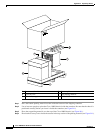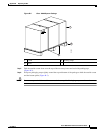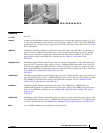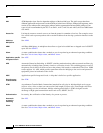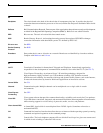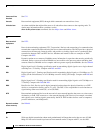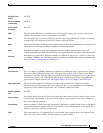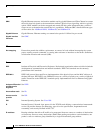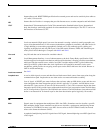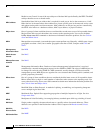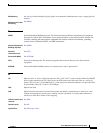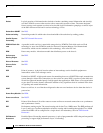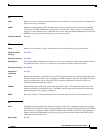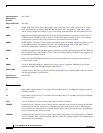
Glossary
GL-5
Cisco 10008 Router Hardware Installation Guide
OL-0659-13
Edge Services
Router
See ESR.
Electromagnetic
interference
See EMI.
Electrostatic
discharge
See ESD.
EMI
Electromagnetic interference. Interference by electromagnetic signals that can cause reduced data
integrity and increased error rates on transmission channels.
EMP
Electromagnetic pulse. Caused by lightning and other high-energy phenomena. Capable of coupling
enough energy into unshielded conductors to destroy electronic devices.
ESD
Electrostatic discharge. Discharge of stored static electricity that can damage electronic equipment and
impair electrical circuitry, resulting in complete or intermittent failures.
ESR
Edge Services Router. A router that aggregates and routes traffic from thousands of low- and
medium-bandwidth subscriber connections Into a few high-bandwidth connections to the Internet core.
Ethernet
Baseband LAN specification. Ethernet networks use CSMA/CD and run over a variety of cable types
at 10 Mbps, 100 Mbps, and 1000 Mbps. Ethernet is similar to the IEEE 802.3 series of standards. See
also Fast Ethernet, Gigabit Ethernet, IEEE 802.3.
F
Fast Ethernet
Any of a number of 100-Mbps Ethernet specifications. Fast Ethernet offers a speed increase 10 times
that of the 10BaseT Ethernet specification, while preserving qualities such as frame format, MAC
mechanisms, and MTU. Existing 10BaseT applications and network management tools can be used on
Fast Ethernet networks. The Fast Ethernet specification is based on an extension to the IEEE 802.3
specification. Compare with Ethernet and Gigabit Ethernet. See also 100BaseT and IEEE 802.3.
Fiber-optic cable
Physical medium capable of conducting modulated light transmission. Compared with other
transmission media, fiber-optic cable is more expensive, but it is not susceptible to electromagnetic
interference and is capable of higher data rates. Sometimes called optical fiber.
Field-replaceable
unit
See FRU.
Flash memory
Nonvolatile storage that can be electrically erased and reprogrammed so that software images can be
stored, booted, and rewritten as necessary. Flash memory was developed by Intel and is licensed to
other semiconductor companies.
Frame Relay
Industry-standard, switched data link layer protocol that handles multiple virtual circuits using HDLC
encapsulation between connected devices. Frame Relay is more efficient than X.25, the protocol for
which it is generally considered a replacement.
FRU
Field replaceable unit. A component that can be removed from a network device and replaced in the
field. Line cards, power modules, and fan modules are typically FRUs.




